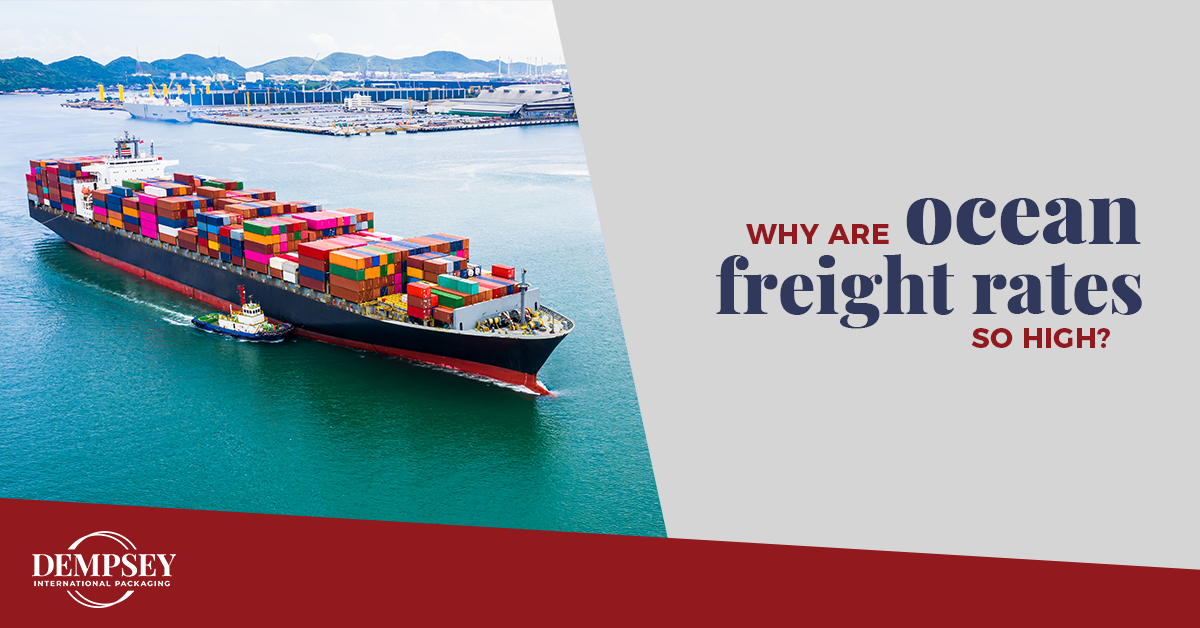The trans-pacific trade (TPEB) market, especially Asia to the United States is in a state of complete chaos. Between rates, space, equipment, weather, and tariffs, there is quite a bit to discuss.
Many of you have wondered, “Why are rates so high now?” The answer is complicated; here’s a few of the many pieces that will help paint a picture and understand the situation.
First and foremost, space is extremely congested. There is still space available to the West Coast ports, but expect to pay a premium. East Coast/Gulf Coast space and availability is currently booked to 100% until the end of August. The lack of space will inversely effect the demand, which is what we’re seeing with the extraordinarily high rates. The ocean freight carriers have changed their approach, working to ensure they continuously operate as profitable businesses, as opposed to the past (see Hanjin bankruptcy for contrast). I believe that long gone are the days of three digit ocean freight costs to the West Coast. Moving forward, if there were ever to be weak loading forecasts, anticipate a series of blank sailings to follow immediately.
In today’s case, increased rates are not due to blank sailings, although the blank sailings in Q2 probably did have a trickle-down effect. Right now the market is trying to bear this high demand. Unfortunately, we’ve watched the ocean freight rates climb and climb. The ocean carriers have announced another increase on August 15 vaulting us into the $3,500 dollar range just for the ocean piece to the US West Coast! If I am not mistaken, this is a record high for both the costs and volume in the TPEB.
As a few of us have seen already, equipment issues in Asia, particularly in China, are facing container shortages and availability. However, container availability is an extremely fluid situation, as a vessel can berth and replenish the container pool. But, the return of containers proves to be more difficult than sending the containers to the US, thus it is not a continuous flow. If you can imagine, some of the largest hubs in the US are inland points, such as Memphis. That means when we empty our container and send it back to the rail, they have to coordinate the empty return to the port, and again coordinate the pick up by these vessels, which already might be full. Situations like these may kink the hose, and leave the container depots dry.
An excess of containers to the West Coast is also becoming an issue. There is a chassis shortage building at the LA/Long Beach Port. This may trickle to other major port/ramp locations, but be wary as you may be facing delays.
Now that we’re coming into hurricane season, China is also in typhoon season. According to Chinese news, there is a typhoon that touched land around the area of Xiamen. The carriers will omit ports in their rotations as necessary to keep the crew and their vessels safe. Nobody wants their container blown off the vessel anyway!
Lastly, and some good news, the section 301 tariffs imposed almost two years ago now are still seeing changes and adjustments on the fly. It was announced that the exclusions for the 700 products that were on the list are to expire 8/7. Of those, 266 products will continue to enjoy the exclusions.
I hope this provides lots of good information for your planning purposes, and a better understanding of the situation at hand. If you were to have any more detailed or additional questions, please feel free to let me know, and we can have a quick chat: bgong.den@oecgroup.com.
Authored by: Brian Gong, Senior Logistics Consultant at OEC Group Denver
Founded in 1981, OEC Group has a vision to provide comprehensive logistics services to clients. Today OEC Group serves destinations throughout the world and has grown into one of the leading logistics providers from Asia to North America, with offices in over fifty countries.




